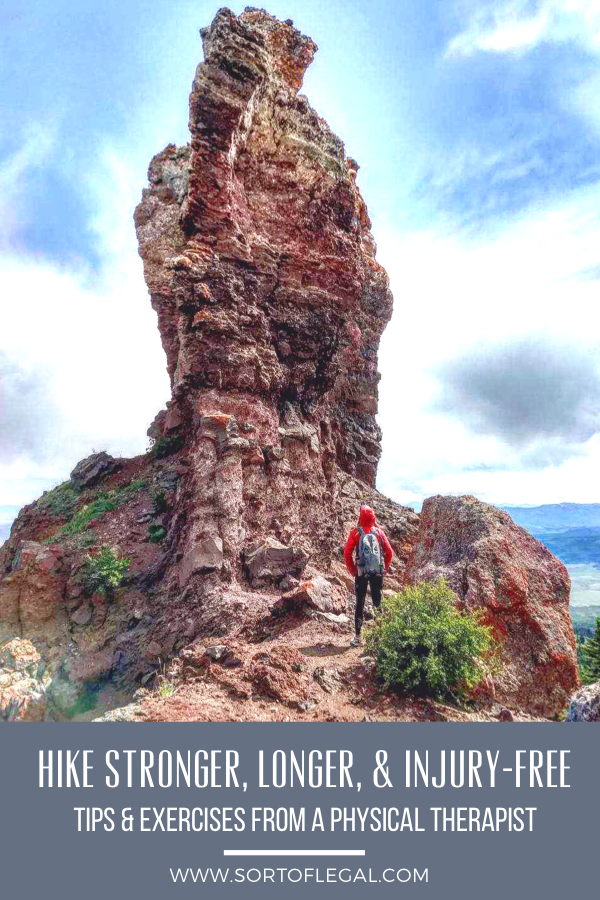
Hike Stronger, Longer & Injury Free With These Tips & Exercises From a Physical Therapist
Need new gear for your hikes? Shop Moosejaw for free 2-day shipping on your favorite outdoor brands on orders over $49
I’ve always loved hiking and this year, I’ve made it a priority. I’ve hiked a lot. I ran-hiked a snowy 14-miles in Mt. Laguna area in winter. I backpacked the Trans-Catalina Trail with a friend in May. I completed my first two 14’ers in Colorado as solo-hikes. I spent countless hours on trails during my four months of #vanlifing in my Honda CRV.
And I’m not sick of hiking. Quite the opposite, in fact. I want to do more backpacking and challenge myself with longer hikes, new terrain, and tougher summits. To do that, I need to take training and injury prevention more seriously. I can’t afford to get injured because I don’t want to stop hiking and since I hike and trail run solo a lot, a bad mid-hike injury could be more dangerous.
Like many, I’ve never “trained” for hiking before. The most I’ve done is increase exercise generally when a hike or trip, like our girls trip to Banff, was approaching. So, I had some questions about the most effective approach to hike-specific training and injury prevention:
What are the best exercises to increase strength?
How can I minimize chances of hiking injuries as I increase volume and intensity of hiking?
What are the common mistakes people make when training for hiking?
How can you avoid painful knees when hiking downhill?
Katie is a fellow outdoor enthusiast and physical therapist with her own practice, Balanced by Katie. I went to her for an assessment before a trail half marathon and she not only pointed out things I was completely unaware of (ankle mobility issues), but explained how that impacted my body and running. She’s all about helping you continue to do the sports you love without harming your body, not telling you to stop doing your favorite activities.
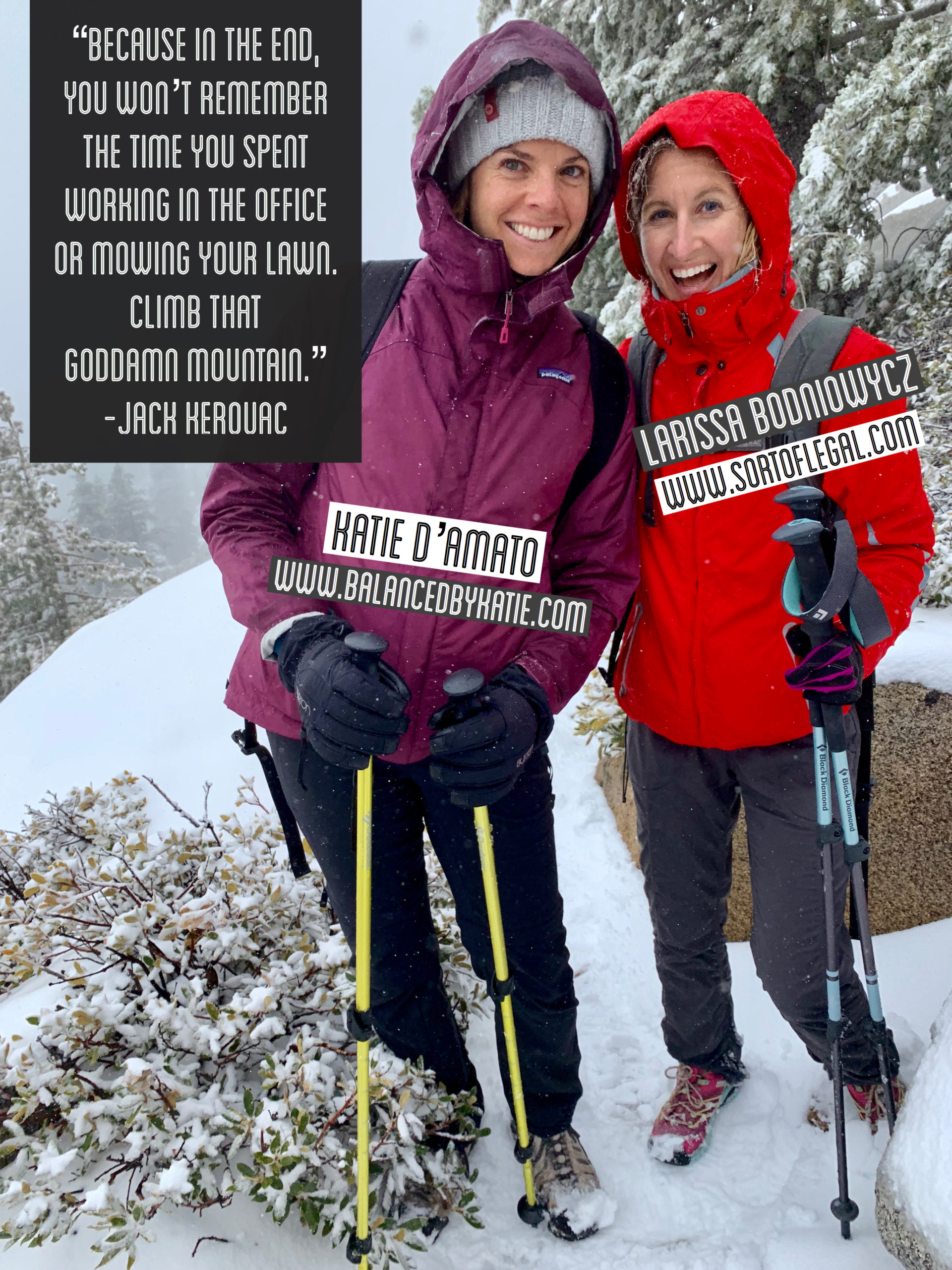
Katie shared both general tips and some of her top exercises for hiking strength and injury prevention. For a the full detailed explanation of why these tips matter and how to do each exercise properly (spoiler alter – there’s a f-r-e-e guide with photos available), check out her article Love Hiking But Hate Injuries?
TIPS FOR STRONGER, LONGER, AND INJURY FREE HIKING
Slow it Down.
Cool your jets and start your hike slowly. Going all-in immediately doesn’t give your body sufficient time to warm-up and loosen up.
Use Both Sides of Your Body.
When hiking, there is a natural tendency to use your dominant leg more which can result in overuse injuries to that leg and in the long term, muscle imbalances that can cause aches and pains in other areas of your body.
Shorten Your Stride.
Shorten your stride and lean back slightly as a counter-balance when hiking downhill to help avoid pesky knee pain and shin splints.
Train for Hiking.
Being generally “in shape,” maybe enough to get you through a hike, but “failing to train for the sport puts you at risk of injury,” says Katie. Start by incorporating the exercises below into your regular routine.
Stretch.
You’ve heard it a million times because it’s true. Proper stretching helps prevent injury. Katie recommends stretching after your hike.
TOP EXERCISES FOR STRONGER, LONGER, AND INJURY FREE HIKING
The following are some exercises and stretches that Katie recommends to help you build the strength and mobility you need for fun and injury free hiking. They can be done anywhere, no equipment required – so no “I don’t live near mountains,” or “I don’t have a gym membership” excuses for not training. Once you’ve incorporated them into your routine, you can feel free to add on additional or more advanced exercises and stretches.
Courtesy of Katie, you can download the full guide for these exercises including more photos, guidance on form, and advice on number of reps and sets for f-r-e-e at Balanced by Katie.
Strength Training for Hikes
Squats
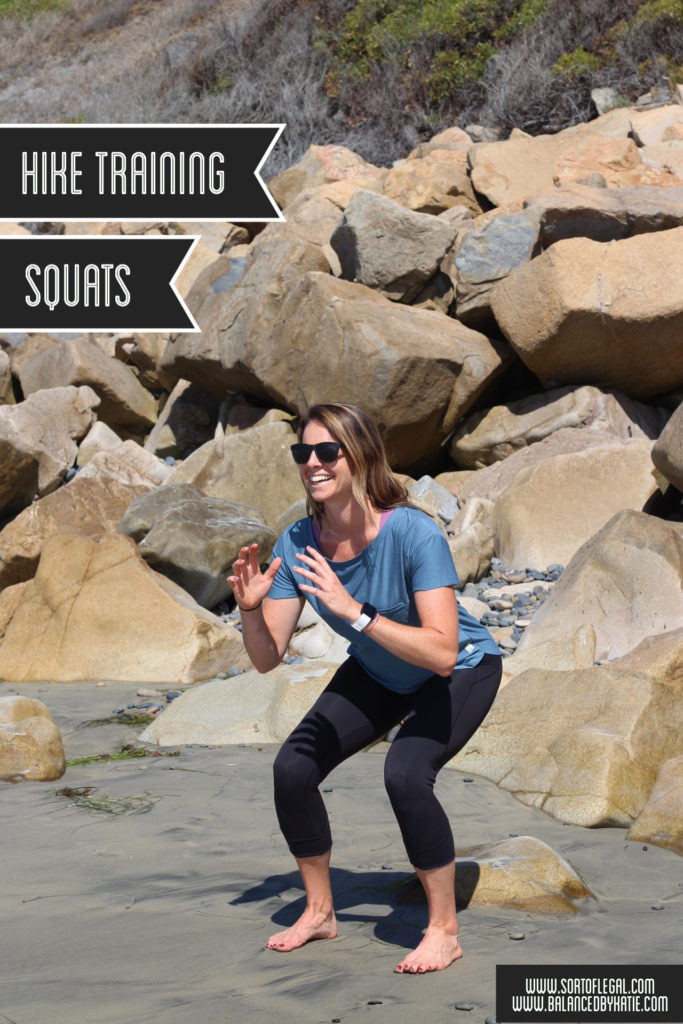
Reverse Lunges
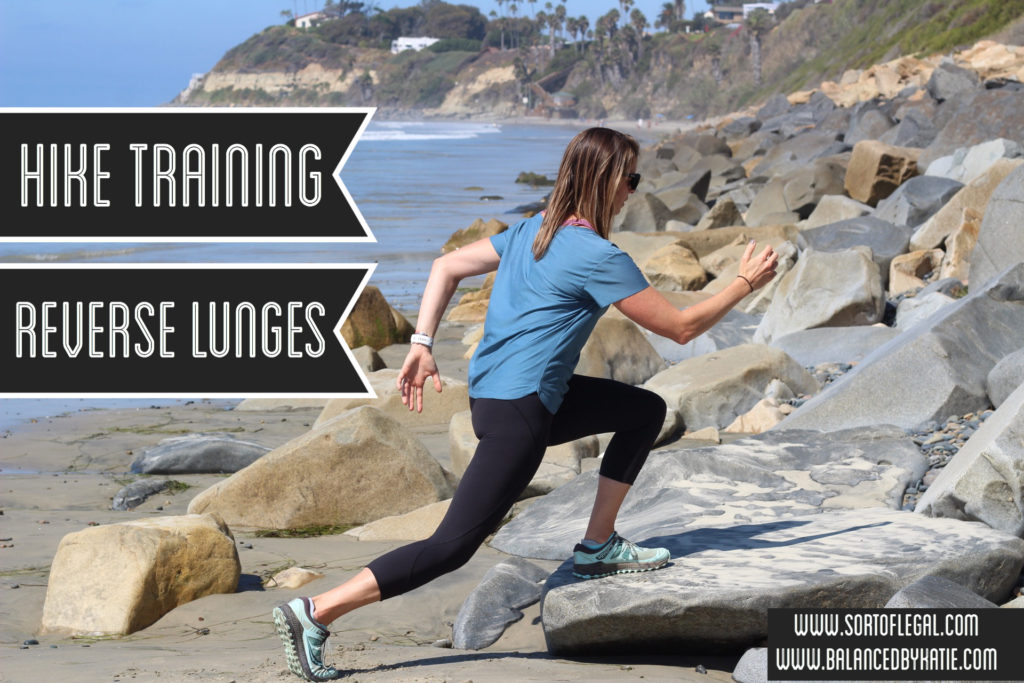
Lateral Lunges
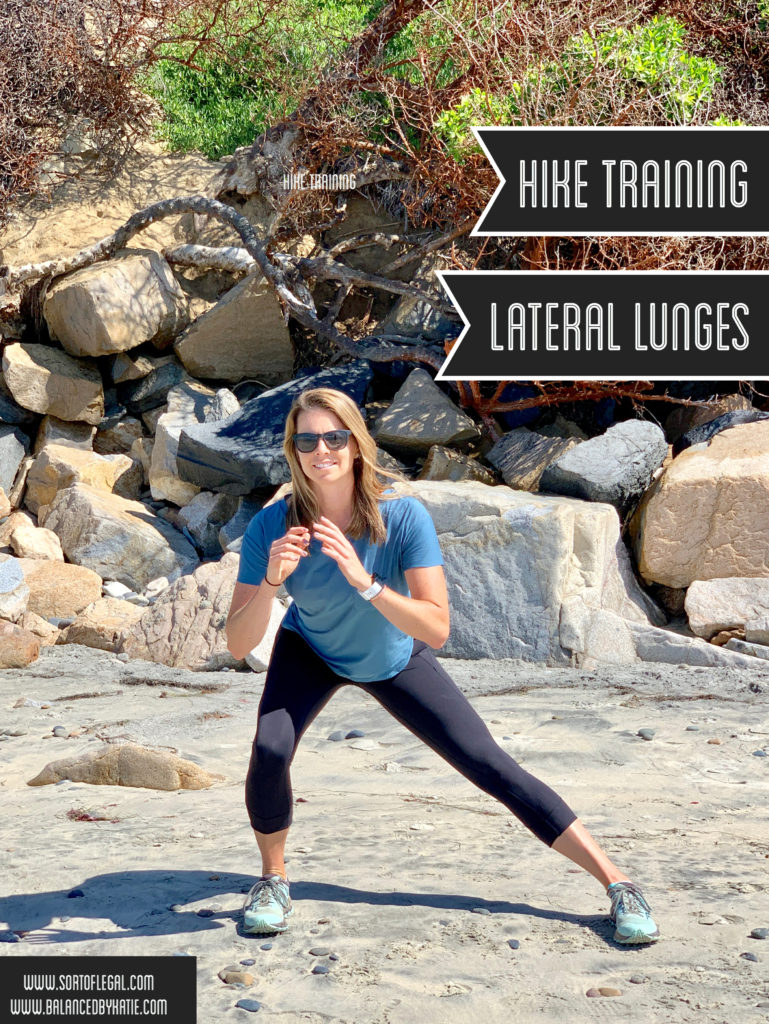
Stair Workout
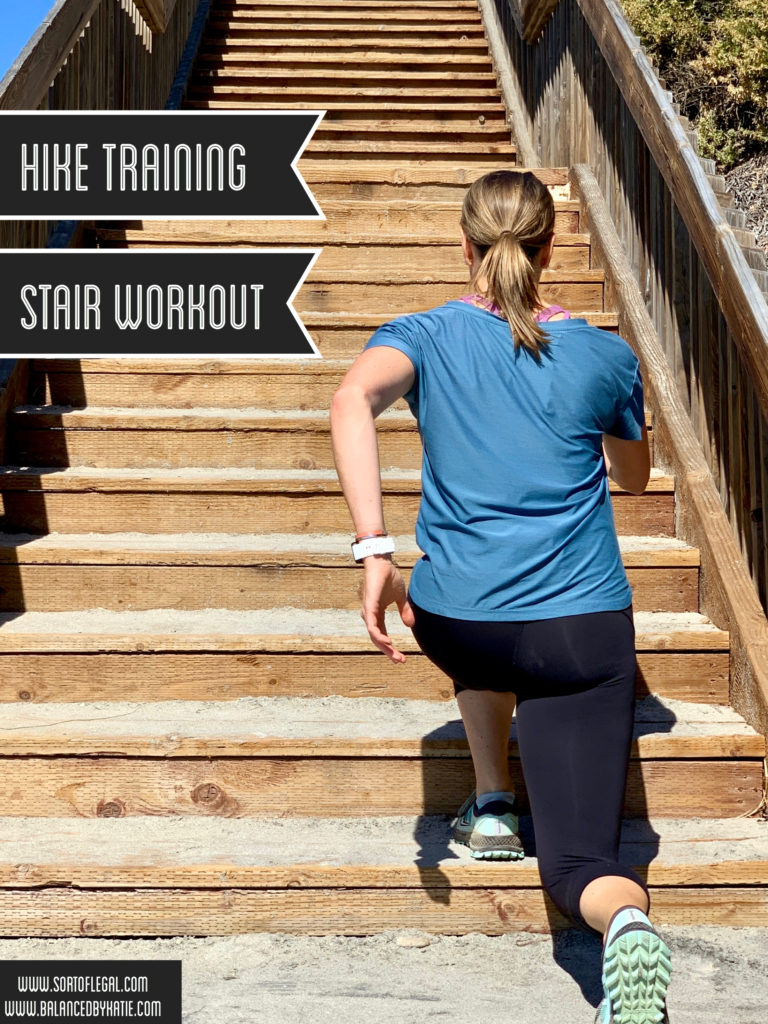
Stretching for Injury Free Hikes
Dynamic Hamstring Stretch
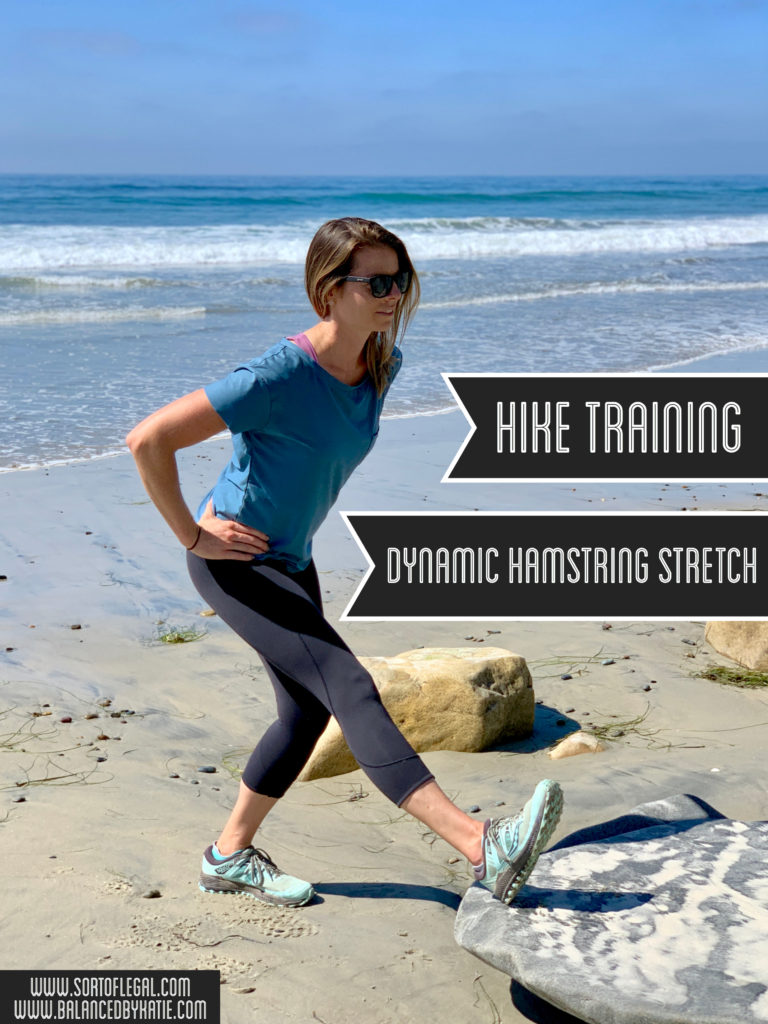
Hip Flexor Stretch
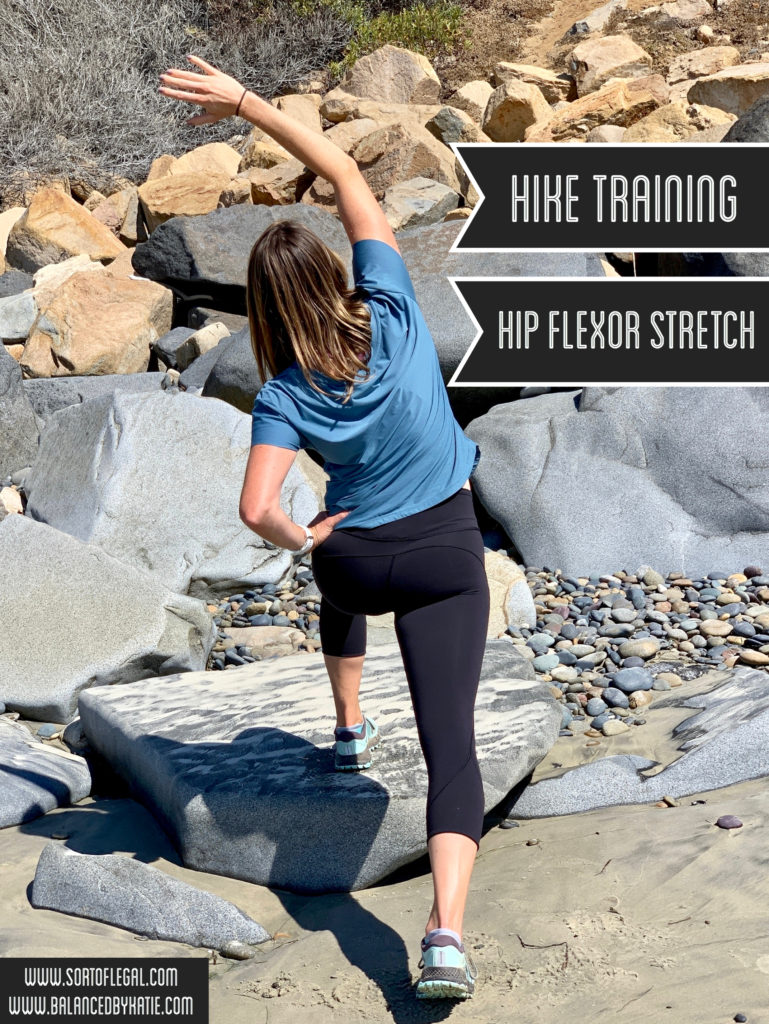
Calf Stretch
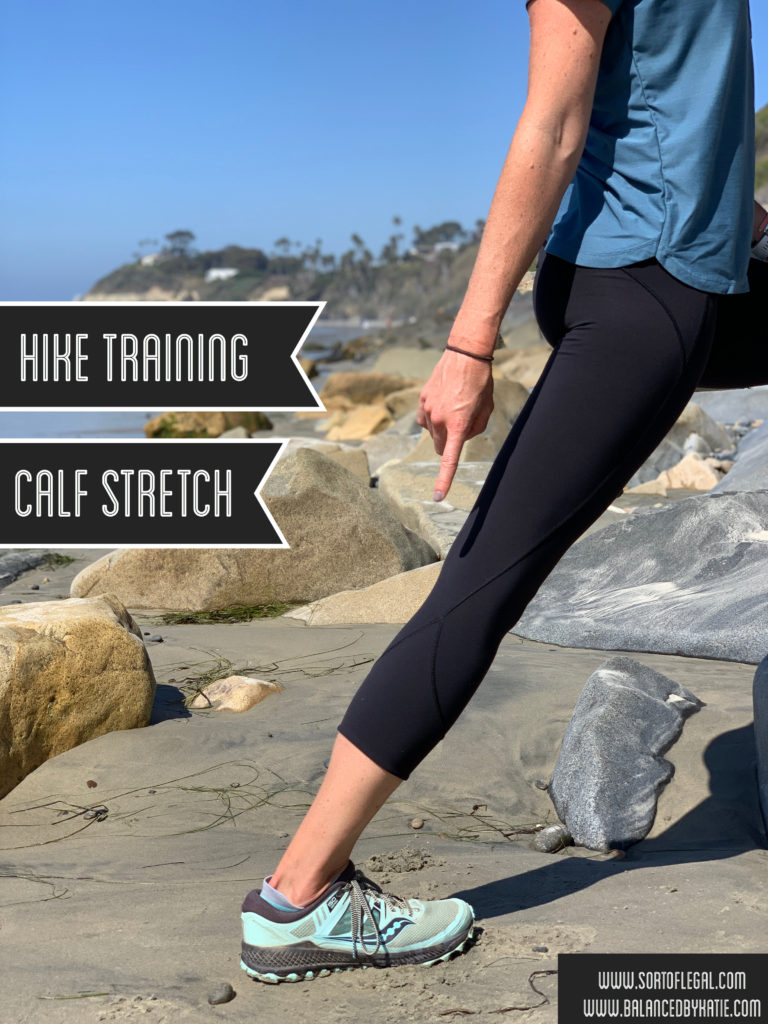
Hope this helps provide you with some realistic, actionable ways to help you hike longer, stronger, and happier! I’d love to hear more about your hiking – what are your hiking goals? What questions do you have about hiking locations or fitness? Comment or shoot me a message. 🙂
Other Articles You Might Like
Ten Essentials for Day Hikes
I’m a 5’ 4” Petite Female and I Hike & Trail Run Solo. Thoughts on Safety, Risk, and Why I Do It
Solo Female Hiking & Trail Running, What I Do To Stay Safe
How to Avoid the Crowds and Enjoy Quiet Time in Nature at Busy National Parks
